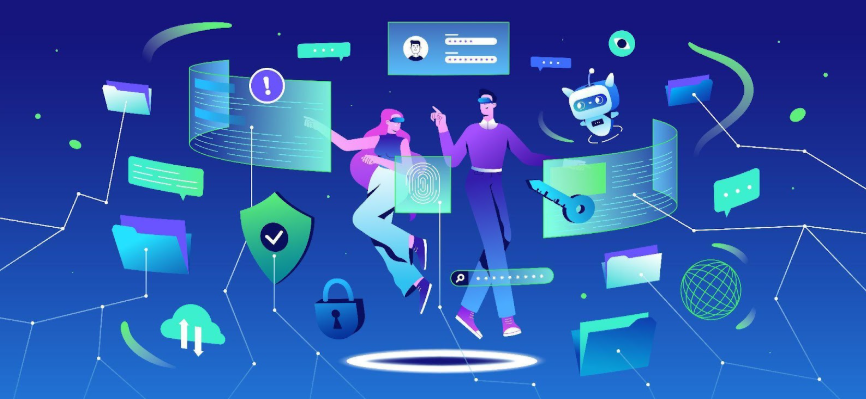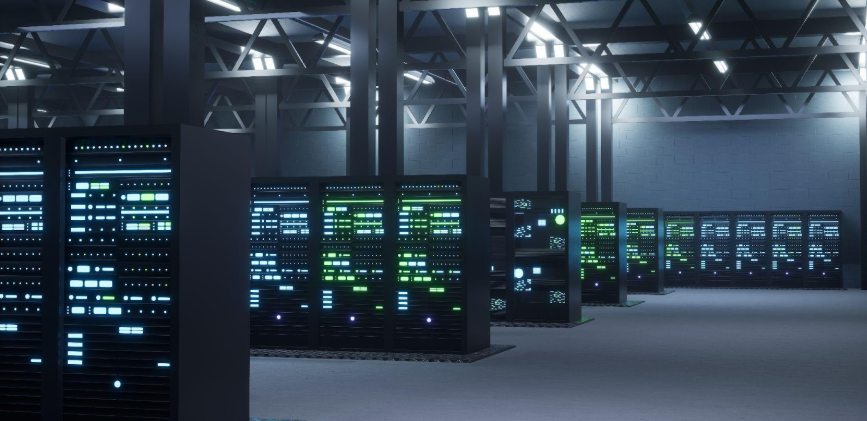WGU D488 OA Study Guide III - 2025 | Mastering Cybersecurity Essentials 📖
Data security and system operational continuity have risen to the top of importance in our contemporary cybersecurity world. Digital superheroes work as cybersecurity equivalents because they guard against digital dangers that occur on their watch. Any cybersecurity superhero requires to understand below topics:
- Access Control Models (e.g., DAC, MAC, RBAC, ABAC): DAC (Discretionary Access Control) allows resource owners to decide access. MAC (Mandatory Access Control) enforces policies based on classification levels. RBAC (Role-Based Access Control) assigns access based on roles, and ABAC (Attribute-Based Access Control) grants access based on attributes and policies.
- Redundancy and High Availability (e.g., Clustering, Load Balancing): Clustering involves grouping servers to ensure service continuity, while load balancing distributes traffic across multiple servers for optimal performance and fault tolerance.
- GDPR, HIPAA, SOX Compliance: GDPR focuses on data privacy in the EU, HIPAA ensures healthcare data protection in the U.S., and SOX mandates financial reporting and corporate governance standards in the U.S.
In this article, we’ll break down these complex concepts into bite-sized, easily digestible pieces, so by the end of this journey, you’ll be ready to ace WGU D488 OA questions and confidently navigate the world of cybersecurity architecture and engineering. So grab your cape (and maybe a cup of coffee), because we’re diving into the essentials that make your systems not only secure but also legally sound and reliably available!
How to Use This Guide for the WGU D488 OA Exam?📖
The D488 Cybersecurity Architecture and Engineering OA exam at WGU evaluates your understanding of access control models, redundancy strategies, and compliance regulations. This guide simplifies the key concepts of access control models (e.g., DAC, MAC, RBAC, ABAC), redundancy and high availability (e.g., clustering, load balancing), and GDPR, HIPAA, SOX compliance to help you grasp the topics tested in the exam.
We also provide exam-style questions and practical applications to ensure you’re fully prepared for the questions on the WGU D488 OA exam.

Access Control Models For D488 OA📝
Managing system resources and data remains a fundamental security requirement within cyber protection because it protects information alongside ensuring system security. Different types of access control models exist for system access management in organizational environments and they offer distinct regulatory frameworks according to operational demands. We will examine the four primary access control models starting with Discretionary Access Control (DAC) and then proceeding through Mandatory Access Control (MAC) and Role-Based Access Control (RBAC) until discussing Attribute-Based Access Control (ABAC).
The models assist cybersecurity professionals in developing secure systems through the ability to determine data access permissions for system users. This section will explain all four access control models through detailed descriptions and best-use explanations.
1. Discretionary Access Control (DAC)
The most adaptable access control model exists under Discretionary Access Control (DAC). The central decision maker under DAC determines permissions for their owned resources such as files or databases. Creating files enables you to determine the permissions for reading editing and deleting among other users. The ownership role provides full access management capabilities over resource accessibility by the owner.
- Flexibility: DAC is highly flexible because the owner can easily change access permissions whenever necessary.
- Security: However, this flexibility comes at a cost. Since users manage their own permissions, there’s a risk that some users may mistakenly give inappropriate access to others. This can lead to security breaches.
- Use Case: DAC is commonly used in business environments and social networks where flexibility is crucial, but the risk can be managed.
2. Mandatory Access Control (MAC)
The access control model MAC operates with more restrictions than DAC. Security labels that belong to both users and resources determine access rights through MAC. Access to particular information depends on the security labels assigned to both users and resources. Labels containing terms such as “Confidential” or “Top Secret” determine user access permissions to specific system data.
- Central Authority: In MAC, access decisions are made by a central authority (usually system administrators), rather than by the users themselves.
- Flexibility: The flexibility is low because the access rules are set in advance and cannot be easily changed by users.
- Security: MAC is considered more secure than DAC because it enforces strict rules and access control policies. It is ideal for high-security environments such as government and military organizations.
- Use Case: MAC is often used in environments where security is a top priority, such as in military or government settings.
3. Role-Based Access Control (RBAC)
Users in organizations obtain their access permissions through Role-Based Access Control (RBAC) by their defined organizational role. Each employee in HR receives payroll data access while accounting data access belongs to individuals in the finance department. RBAC facilitates permission management through roles since it combines users into specific role groups that receive assigned permissions instead of individual user permissions.
- Simplified Management: RBAC makes it easier to manage access because permissions are associated with roles rather than individual users. For instance, if a new employee joins the HR team, they can automatically inherit the necessary access permissions.
- Flexibility: RBAC offers moderate flexibility since roles are predefined but can be adjusted as needed.
- Security: It is considered secure and effective, especially in corporate environments where well-defined roles exist.
- Use Case: Corporate environments, particularly for databases or internal applications, benefit greatly from RBAC.
4. Attribute-Based Access Control (ABAC)
Attribute-Based Access Control (ABAC) involves a more intricate method than the other access models. ABAC enables the evaluation of access through the use of attributes. There are different categories of attributes within ABAC which refer to users through their roles along with resources by type and environmental factors by schedule.
- Fine-Grained Control: ABAC allows for precise control over access because it takes into account multiple factors. For example, a user might only be able to access certain files during working hours or if they are logged into a secure network.
- Flexibility: ABAC is highly flexible because access policies can dynamically change based on different conditions, such as the environment or user behavior.
- Use Case: ABAC is best suited for dynamic, data-driven applications that require complex and adaptable access control.
Key Differences Between DAC, MAC, RBAC, and ABAC
To summarize the key differences between these four models:
Feature | DAC | MAC | RBAC | ABAC |
Control | User-level | System-level | Role-based | Attribute-based |
Flexibility | High | Low | Moderate | High |
Security | Lower | Higher | Moderate | High |
Management | Decentralized | Centralized | Simplified through roles | Complex, detailed policies |
Implementation | Easy | Difficult | Moderate | Complex |
Use Cases | Social networks, file systems | Military, government | Corporate environments | Dynamic applications |
From ensuring that only authorized users access sensitive data to guaranteeing those systems remain operational even during failures, understanding Access Control Models Redundancy & High Availability is essential for building resilient and secure IT infrastructures and passing WGU D488.
Redundancy and High Availability For D488 OA📝
The fundamental elements of cybersecurity rely on high availability (HA) with redundancy to maintain operational systems under all circumstances involving hardware troubles and security threats. Both strategies function synergistically to create fault tolerance and continuous operations alongside business protection from downtime that leads to substantial financial damage. In this section, we’ll dive into the concepts of redundancy, the different methods to implement it, and how high availability helps maintain system performance despite failures.
What is Redundancy?
System flaw elimination occurs through the redundant implementation of vital system components. A system backup uses redundancy to maintain service continuity through alternative components when one part of the system fails.
Types of Redundancy
- Hardware Redundancy: This refers to duplicating physical components such as servers, routers, or network devices. For example, if a primary server fails, a backup server automatically takes over.
- Software Redundancy: Having backup software or applications ready to step in if the primary application fails. This ensures continuous service without disruption.
- Data Redundancy: Keeping information stored in many different physical systems to stay accessible even when one system goes down.
- Network Redundancy: This involves establishing multiple network paths so that if the primary network connection fails, traffic can be routed through a secondary path, ensuring continuous connectivity.
What is High Availability?
The concept of High availability (HA) presupposes systems together with processes that guarantee the continual functioning of essential systems during unexpected failures or breakdowns. The system guarantees service availability without substantial interruptions even when one or more system components experience failure.
Key Components of High Availability
- Redundancy: As mentioned, redundancy is fundamental to HA. By having backup systems and components, organizations can reduce the chances of downtime caused by failures.
- Failover: This is the ability to automatically switch to a backup system or component in the event of a failure. For instance, if a server fails, the system automatically switches to a backup server without user intervention.
- Replication: In HA setups, data and workloads are replicated across multiple nodes to ensure that if one node fails, others can take over without data loss.
- Load Balancing: Receive less traffic because this distribution system sends network traffic between multiple servers to maintain stable performance.
Clustering
The technique of clustering combines various servers or systems which operate as a unified system. When servers cluster together they both enhance accessibility and operational speed because distributed workload responsibilities span multiple machines.
Types of Clustering
- Failover Clustering: A failover cluster functions through redundant servers which instantly transfer the workloads of failed machines to maintain continuous operations.
- Load Balancing Clusters: These clusters distribute the workload evenly across multiple servers, preventing any single server from being overwhelmed and improving performance.
Load Balancing
Load balancing is an approach to distribute network traffic among multiple servers to stop any server from handling too much traffic at once. High availability along with optimal performance requires this setup.
Types of Load Balancers
- Hardware Load Balancers: These are dedicated devices that manage network traffic distribution.
- Software Load Balancers: These applications perform similar functions to hardware load balancers, but are software-based and can be deployed on any standard hardware.
High Availability in Firewalls
The purpose of High Availability (HA) firewalls is to preserve network security when a firewall experiences collapse. The operation of backup firewall devices functions in conjunction with the main devices which enables automatic transfer of responsibilities when a failure occurs.
Features of HA Firewalls
- Redundant Firewall Devices: Multiple firewalls are used together in a clustered setup to maintain protection continuously.
- Automatic Failover: If one firewall fails, the system automatically switches to a backup firewall, ensuring no disruption in security.
- Load Balancing: The network traffic is distributed across multiple firewalls to improve performance and reliability.
- Stateful Failover: This ensures that the backup firewall takes over existing network connections seamlessly, without causing interruptions.
Systems security and availability benefit from Redundancy and High Availability implementations while these regulations combined with GDPR HIPAA and SOX Compliance enforce essential cybersecurity regulations for sensitive data protection. Let us dive deeper into these WGU D488 concepts.
Tired of reading blog articles?
Let’s Watch Our Free WGU D488 Practice Questions Video Below!

GDPR, HIPAA, SOX Compliance For D488 OA📖
Any organization needs to follow data protection and privacy rules to operate properly. The application of essential cybersecurity laws requires organizations to follow three major regulations: the General Data Protection Regulation (GDPR), the Health Insurance Portability and Accountability Act (HIPAA), and the Sarbanes-Oxley Act (SOX). The regulations support data protection aims as well as establishing organizational data handling accountability. The subsequent part examines each fundamental compliance standard by describing its significance alongside its coverage area and its connection to cybersecurity structures.
1. General Data Protection Regulation (GDPR)
European Union citizens maintain their privacy and data protection through the GDPR which entered the European Union as a regulation. Through responsible organizational practices, the regulation delivers citizens transparency about how their personal information is handled.
Key Principles of GDPR
- Data Protection by Design and by Default: Businesses must include data protection techniques throughout their system development and make protective measures automatic from beginning to end.
- Consent: Organizations need explicit permission from people they process for their personal data before starting. Users must understand all terms about their data use when they accept these terms.
- Right to Access and Portability: Individuals have the right to access their personal data and transfer it to other organizations if they choose.
- Right to Erasure: Known as the “right to be forgotten,” this allows individuals to request the deletion of their personal data under certain circumstances.
- Data Breach Notification: When a data breach touches personal records organizations need to reveal it to both affected people and official groups within 72 hours.
Impact of GDPR on Cybersecurity
Data protection under the GDPR demands strong requirements that directly influence cybersecurity operational standards. Organizations need to deploy strong security systems that battle against unauthorized entry and data theft incidents. The requirement to follow GDPR regulations brings significant financial penalties along with it thus businesses must actively protect their data to avoid those consequences.
2. Health Insurance Portability and Accountability Act (HIPAA)
Every healthcare facility in the US must implement Healthcare Insurance Portability and Accountability Act steps to protect patient data according to national healthcare standards. Under this standard, the healthcare organization needs to protect medical data with top security and maintain complete privacy.
Key Aspects of HIPAA
- Privacy Rule: The Privacy Rule establishes standards for the protection of health information, limiting the use and disclosure of patient data to only what is necessary for treatment and other permissible activities.
- Security Rule: Under the Security Rule organizations need to protect their electronic Protected Health Information (ePHI) through administrative physical and technical security standards.
- Breach Notification: HIPAA mandates that healthcare organizations must notify affected individuals in the event of a breach involving unsecured ePHI.
Impact of HIPAA on Cybersecurity
HIPAA regulates how healthcare organizations handle their data security through encryption and logging systems thus shaping their overall digital defense plans. Healthcare groups must develop strong data security steps to handle patient information and follow these regulatory standards. Not complying with data security standards results in penalties and damages trust between healthcare organizations and their patients.
3. Sarbanes-Oxley Act (SOX)
The Sarbanes-Oxley Act exists as a U.S. legislation that works to defend investors by enhancing trustworthiness in company financial statements. The US government created this new law to stop financial corruption following reporting fraud.
Key Provisions of SOX
- Section 404: This section requires companies to establish internal controls and procedures for financial reporting. These controls must be evaluated regularly to ensure their effectiveness.
- Section 802: This provision imposes penalties for altering, destroying, or fabricating records, especially with the intent to influence the outcome of an investigation.
- Auditing Requirements: SOX mandates that companies undergo regular audits by external auditors to verify their financial statements and ensure that they are accurate and compliant.
Impact of SOX on Cybersecurity
SOX regulation seeks to protect financial reports yet it features measures that affect cybersecurity. An organization must build security measures to protect financial data from start to finish under this rule. Business systems must defend against fraud attempts and properly secure all financial data with easy system audibility.

Wrapping Up Cybersecurity Essentials: Ready to Tackle WGU D488 OA! 📖
Congratulations! You have mastered the Access Control Models as well as the important elements of Redundancy and High Availability which directly support success in WGU D488. These learning topics shape practical methods for making secure and trustworthy systems operate under real-world standards. You need a good command of these subjects for the WGU D488 OA because answering them with confidence depends on your level of understanding.
Before starting the test breathe deeply then invest your time in learning and prepare to present your knowledge of cybersecurity. These security principles will help you pass the WGU D488 OA and lead you toward Cybersecurity career success. You’ve got this!






